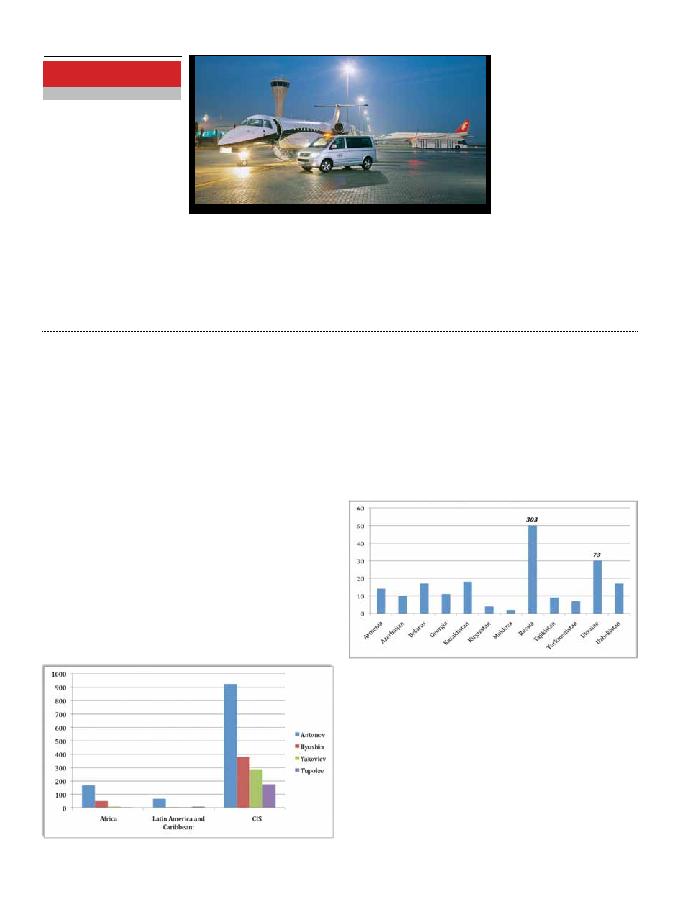
26
GA
/ Vol. 5 / No. 2 / FEBRUARY 2013
Business News
Gama Aviation
adds five aircraft to
its Middle East fleet
During December 2012 the Gama
Group, a global business aviation
services provider announced a major
expansion to its Middle East fleet.
Gama Aviation FZE, a Gama
Group company, is significantly
expanding both the number and
diversity of its managed and charter
aircraft fleet.
Over the course of the past two
months Gama has added an additional
Embraer Legacy 600 and a Challenger
604 to its UAE charter fleet and an
Embraer Legacy 650, Hawker 800XP
and VIP Boeing 737 to its growing
management fleet in the region.
Although Gama is firmly
established at Sharjah International
Airport, with an additional base in
Dubai, this major fleet growth marks
the company's expansion into the
UAE's capital, Abu Dhabi.
The year 2012 was a remarkable
year of expansion for Gama Aviation
FZE in the Middle East region.
Highlights include:
· The opening of the Gama FBO at
Sharjah International Airport;
· The opening of Gama's Jeddah,
KSA office and Abu Dhabi base
· The award of UAE GCAA CAR 145
Approval; and
· The award of UAE GCAA
In 2011 the Russian Ministry
of Transport introduced new
requirements for commercial aircraft,
according to which all the soviet-
era Yak-40s, Tu-134s and An-24s
with no Terrain Awareness Warning
System (TAWS) installed had to be
grounded. Additionally, for quite a
while now operators from Russia
and the CIS have been continuously
phasing out their old and inefficient
Soviet airplanes. For instance, in
2004 Uzbekistan Airways was still
operating approx. 30 Il, Tu, Yak and
An airplanes, but by 2012 the airline
had completely renewed its fleet with
Western-built aircraft. However,
despite the on-going developments,
the Soviet-era aircraft are still being
widely operated by operators in the
emerging markets. Unfortunately,
the aftermarket support of the
aircraft is becoming more and
more challenging, as the number of
relevant MROs and part suppliers is
diminishing along with the Soviet
fleet itself.
Many aircraft types, designed back
in the USSR, are still quite popular in
Latin America, Asia Pacific, Africa,
and the CIS. Even in Europe and North
America! Of course, the CIS is `the
natural habitat' for Soviet-type aircraft,
with over 1500 airplanes in the region.
At the same time, there are over 200
such airplanes in Africa and about 100
in Latin America and the Caribbean.
These are the main markets which
have historically used and still use
Soviet-type aircraft.
However, the number of aircraft-
in-use is constantly decreasing.
Following the trend, the number
of authorized MRO centres is
also diminishing. Today they are
primarily only located in Russia.
As manufacturers downsize the
production of these aircraft, it si
becoming increasingly difficult
to repair or change components
Unrealized potential of phased out Soviet-era aircraft in the emerging markets
by Zilvinas Sadauskas, CEO of Locatory.com
CAR Part M Maintenance
Management Approval.
"To enter our fourth year of
operations in the Middle East on such
a positive note is very rewarding.
The market in the region for business
aviation remains positive but slow, so
it's pleasing to see that the hard work
and customer service ethic of our entire
team here at Gama is producing strong
results and gaining significant traction.
Whether it's our executive aircraft
handling and maintenance services at
Sharjah, the opening of our Abu Dhabi
and Jeddah bases, the on-going growth
of managed aircraft fleet of providing
our charter customers with more aircraft
choices, Gama Aviation is totally
committed to providing a complete
range of business aviation products
and services to our Middle East based
clients," said Dave Edwards, Regional
Managing Director, Middle East and
Asia, Gama Aviation. ·
Table 1. Soviet type aircraft fleet in regions by type; source: Ascend
Table 2. Il-76 fleet in the CIS region; source: Ascend
for aircraft such as the Tu-134 or
An-24.While phasing out their
Soviet aircraft, it appears that
many Russian operators are just
selling out the airplanes for scrap.
However, should airlines invest into
breaking down those aircraft into
separate components for their future
realization in other regions, this may
become a profitable path for the aging
generation of the Soviet aircraft.
It is believed that in five years'
time Russian operators will
completely phase out the entire
previous generation non-Western
fleet. And though aircraft tear down
is a relatively new business for
local companies, dismantling and
restoring components for Soviet-era
aircraft should definitely pay off, as
many operators outside Russia are
continuing with the utilization of the
aircraft, maintaining the demand for
the inventory high. For instance, we
have been observing a rising demand
on spare parts for the multi-purpose
strategic airlifter Il-76 from Asian
countries, particularly India and
Pakistan. Meanwhile in the CIS there
are almost 500 of the aircraft, some of
which are uselessly stored.
Unfortunately, since the collapse of
the Soviet Union the trade connections
between the Russian market players
and their counterparts in the Middle
East, Africa and Latin America have
completely eroded. For that reason it
is high time that the emerging markets
attempt to re-establish their once
firm ties in order to jointly enhance
the development of the aviation
and its safety. In the era of new
technologies and E-communication it
is essential for the emerging markets
to open themselves to such Internet-
based platforms like Locatory.com,
which are specifically developed to
connect aviation companies from
Mexico, India, Angola, Ukraine or any
other country. ·

